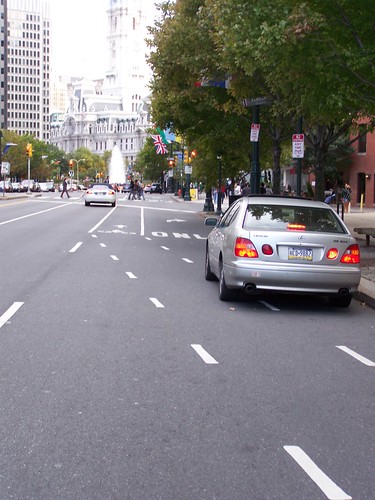Biking and walking stuff
1. EcoVelo reports, in "New Paper from Pucher et al" that John Pucher has a new article that will be published in the Spring. "Infrastructure, Programs, and Policies to Increase Bicycling: An International Review."
2. Scientific American has an interesting article in this month's issue, "How to Get More Bicyclists on the Road: To boost urban bicycling, figure out what women want." (Thanks to Bike Pittsburgh.)
cf. "Splendor in the Grass" from 2005 in the New York Times, which makes a similar point vis-a-vis Bryant Park and "Great architecture, clean streets, culture -- it must be Minneapolis" which makes a similar point about Minneapolis, in a 2005 column by John King in the San Francisco Chronicle.

3. Tuesday there is a webinar on Safe Routes to School issues, focusing on an award winning program in Denver.
4. And in a private e-discussion about vehicular cycling vs. what I might call how to promote bicycling culture (based on the research findings of the Bicycle program in Portland, see "Portland's Bicycle Brilliance" from The Tyee) for the 59% of the population that is willing to ride a bicycle for transportation, but needs greater assistance and assurances about safety, M writes:
I think it’s fair to say that “vehicular cycling” is a lot less threatening to the status quo than what Pucher is advocating. If you follow the Forester school of thought, the existing roads are perfectly adequate bicycle facilities, and it is simply up to bicyclists to learn how to use them. And if we have 12X the bicyclist fatality rate per kilometer traveled, that’s because our bicyclists are less competent, not because our roads are unsafe. Bicycling on American roads, we are told, is just like skydiving – terrifying at first, but a cinch once you get the hang of it.
(emphasis added.) This is what I came across in a meeting with some Maryland state government folks today...
It has nothing to do with the cars going 40 to 60 mph, not signaling on turns, inadequate road facilities that provide safe ways for bicyclists to move through intersections where exclusive right or through lanes pop up, it's the cyclist's fault. In August, a truck made a right turn without signaling and a bicyclist died. The Baltimore Sun described the accident as "the bicyclist hit the truck."
5. With regard to those pesky situations such as when the rightmost lane becomes a right turn lane and you can't get over on your bicycle...

This isn't the best photo because the car wouldn't move. On the Benjamin Franklin Parkway in Philadelphia, the bike lane abuts the curb. But here, as the right lane becomes a right turn only lane, the bicycle lane shifts to the left, but still is the rightmost lane of the through traffic lanes. (You can take bicycles on the "Chinese" buses, which I did on Saturday, when I went to Philly to see an exhibit.)
6. I mentioned the Cynwyd Heritage Trail in a previous entry about the Design on the Delaware conference up in Philadelphia in a couple weeks. Check out the website, the master plan and related links. One, it's interesting in how much information the Lower Merion Township planning website puts up with regard to their various projects underway. Two, the information, civic engagement, vision for the trail, and the master plan are quite interesting.
Truly a model of best practice. The idea of a "recreational" trail as being more than a route for pleasant walking and bicycling is one that I am thinking about more and more these days.
Labels: bicycling, transportation planning, urban design/placemaking, walking



0 Comments:
Post a Comment
<< Home